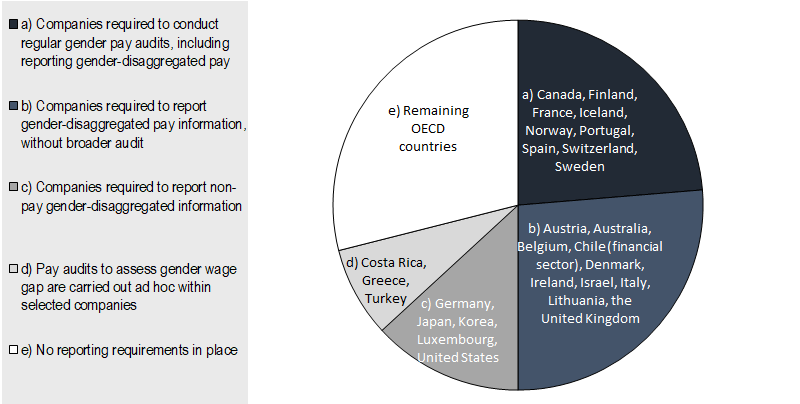Pay Transparency
March 2022 - OECD's "Pay transparency tools to close the gender wage gap", is the first OECD-wide stocktaking of pay transparency measures, and the report finds that half of the 38 OECD countries mandate systematic, regular gender wage gap reporting by private sector firms. This can entail calculating and reporting a range of different wage gap statistics, or the simple overall wage gap, to stakeholders such as workers, their representatives, a government agency, and/or the public.
Within this group, nine OECD countries have implemented comprehensive equal pay auditing processes. Equal pay audits require additional gender data analysis and typically propose follow-up strategies to address inequalities. Most of these policies were introduced in the past decade, and most of this movement took place in Europe, reflecting the 2014 European Commission Recommendation on strengthening the principle of equal pay between men and women through transparency. Many of these pay reporting rules cover the public sector, as well.
These pay transparency processes are based on important legal principles of equal pay for work of equal value, or equal pay for equal work. Twenty-seven OECD countries report to the OECD that they have clarified the concept of equal pay for equal work and/or work of equal value in national legislation. Most other OECD countries have clarified equal pay principles through the courts and case law. Each of these policies, defined further in the report, have the potential to narrow the gender wage gap. But strengthening reforms, greater stakeholder engagement, and more and better evaluations of pay transparency measures are still needed.
Distribution of countries by the presence of regulations requiring private sector pay reporting, pay auditing, or related measures, OECD countries, 2021

Source: OECD Gender Pay Transparency Questionnaire (OECD GPTQ 2021)
Related Documents

